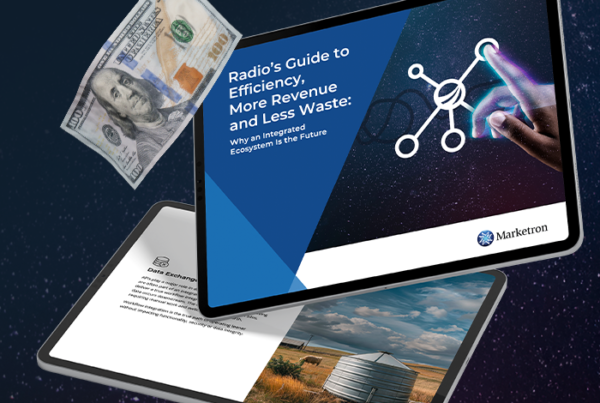Broadcast media companies are all facing challenges with increasing year-over-year revenue. Experts expect ad spending for OTA (over the air) to grow in 2022. Political advertising for midterm elections, sports betting, a healthy economy, and industries bouncing back will fuel that growth. Trends aside, you’re still feeling the pinch. To consistently increase ad revenue, many stations are looking to dynamic pricing. However, there’s some hesitancy. To address this, we’ll be debunking dynamic pricing myths.
Dynamic Pricing Is a Strategic Game-Changer
Dynamic pricing, or yield management, isn’t a new concept. Airlines, hotels and retailers have been using it for years to price. It’s a data-driven way to price that draws from historical data, current availability, demand for placement and other factors.
By leveraging this practice, you can optimize how you price. You’ll no longer need to rely on intuition, flat rates, complicated spreadsheets or other manual efforts. Myths related to dynamic pricing often impact a business’ decision to adopt it, so let’s break those down with facts.
Myth #1: Dynamic Pricing Only Works for Oversells
Many stations believe they don’t need dynamic pricing because they rarely oversell. The truth is that it works for any situation. You can maximize revenue regardless of historical performance. You can let the market dictate the price, or you can set the value of your ad spots based on the data.
It may also help you reach full sellouts for a daypart or program. For example, you have a flat rate for your morning show of $400. There are 10 spots, and you only sell eight. Your revenue is $3,200.
With dynamic pricing, the cost fluctuates. You may sell three for $250, five for $400 and the last two for $600. While three spots sold under your standard rate, five sell at it and two above it. Your final revenue is $3,950.
Myth #2: You Can’t Use Dynamic Pricing If You Have Contracted Rates
Stations often have contracted rates for top-tier advertisers based on volume. If you have those in place, they won’t impact your ability to use dynamic pricing. A yield management platform that manages pricing can have exclusions for these advertisers. Further, you also have the option to omit certain dayparts or programs.
Myth #3: Exporting or Integrating Traffic Data Is Too Complex
Yield management tools rely on the data from your traffic or reporting system. It’s the foundation of the process. In most cases, a traffic system can integrate with a dynamic pricing solution, even if the two systems aren’t from the same provider. APIs can facilitate this data exchange in many cases.
When reviewing the options, you’ll want to ensure compatibility. It shouldn’t be a barrier to implementing this strategy.
Myth #4: Dynamic Pricing Could Drop Spots Below Our Floor
The dynamic pricing engine is constantly ingesting data and working to deliver the most optimized price. However, it’s not operating in a vacuum. You can set floors and ceilings. Additionally, you can select a variety of yield curves, which are programmed algorithms that let the demand for inventory influence price.
There’s a yield curve to address every situation, from flat lines to price drops before the spot airs to rate increases with no ceiling.
Myth #5: Yield Management Isn’t Scalable
Those not using dynamic pricing likely have a pricing expert (or several). They hold the keys to what your salespeople can offer. The concept wouldn’t be scalable in this old model because it requires labor. With technology, there’s no impediment to scaling. Your sales team will have more autonomy, but your pricing specialists can set parameters for floors, ceilings and tolerances by salesperson. Plus, you can do this for every 30-minute time block.
Myth #6: It’s Too Technical to Implement
Getting started with dynamic pricing is surprisingly easy. It requires no data scientists or specific tech skills. All you need is the right partner and technology. When you have that, you’ll have support for each phase:
- Pre-launch: Define success, train and test.
- 30 days post-launch: Check in on tracking against goals and discussing new needs.
- 90 days post-launch: Review usage, metrics and objectives.
Additionally, you should have access to on-demand resources and support teams. With this level of assistance, you can deploy dynamic pricing to your sales team with confidence.
Dynamic Pricing Myths: Don’t Let Misconceptions Hinder Your Strategy
Now that you know the facts about dynamic pricing, you can see why it’s so powerful. The bottom line is that it does the pricing for you based on data. Learn more about the strategy by watching our on-demand webinar, From Stressing and Guessing to Data-Driven Spot Pricing.






